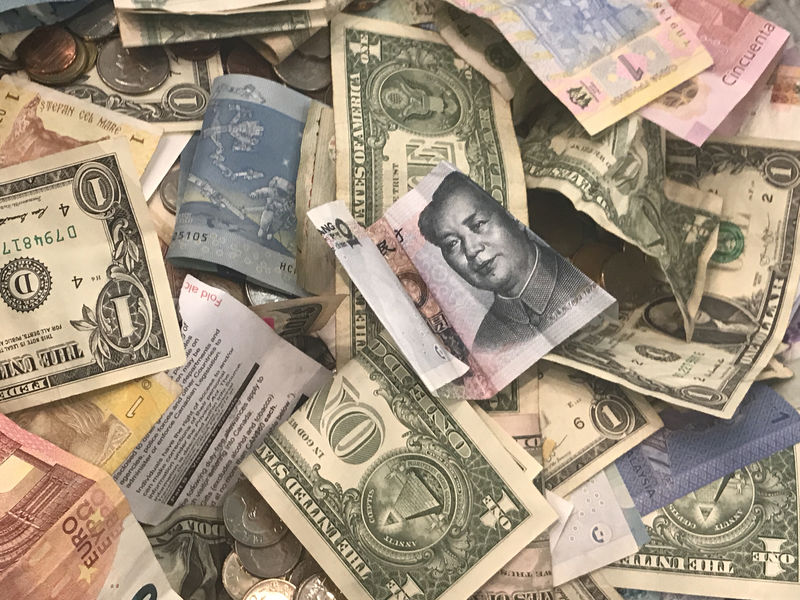By Tommy Wilkes and Ritvik Carvalho
LONDON (Reuters) - The $5.1-trillion-a-day foreign exchange market is suffering more than most from central bank decisions to move in tandem and keep interest rates low for longer.
Policymakers moving to press pause on policy tightening in 2019, as well as broadly mixed messages from the biggest economies, have combined to suppress already-low volatility to levels not seen in five years.
Forex traders who look for economic and policy divergences to bet on are struggling to find persuasive reasons for betting on one currency moving much against another. Hedge funds and asset managers are sitting on the sidelines, and daily trading volumes are down by double-digits.
Even a rush into government bonds by panicked investors and increased swings in stocks at the end of March were not enough to shake currencies out of their stupor, fuelling concerns on bank trading desks that generate bigger profits when prices swing more wildly.
Below are four graphics illustrating just how stuck in the doldrums FX markets are.
Volatility fell to its lowest levels since late 2014 in March, according to the Deutsche Bank (DE:DBKGn) Currency Volatility Index.
For an interactive version of the below chart, click here https://tmsnrt.rs/2V7E5Iw.
For a graphic on Currency volatility falls below historical average, see - https://tmsnrt.rs/2VdZDDC
The index, which measures three-month implied volatility - a commonly-used measure of expectations of price movements - weighted across major currency pairs, touched levels of 6.22, down from 9 in January.
Averaged out across the first three months of 2019 volatility was slightly higher than previous quarters but the trend is clear: currency markets have become far calmer since 2016.
DOVES DOMINATE
Calmness in the world's most traded currency pair, euro/dollar, was particularly notable after the U.S. Federal Reserve flagged an end to its rate tightening cycle and the European Central Bank followed with its own dovish shift.
Three-month rates of implied volatility touched their lowest since 2014, and barring that year, were near their lowest levels since 2007.
With concerns growing about slowdowns in both economies the exchange rate was pinned into its narrowest ever trading range - of less than four cents this compared to an average quarterly range of around 9 cents. It hit a record 24 cents a decade earlier.
For a graphic on Euro/dollar stuck in narrowest quarterly range on record, see - https://tmsnrt.rs/2WxrsXw
Swings in the dollar against Japan's yen, traditionally a more volatile exchange rate, haven't fared much better - three-month implied volatility dropped below 6 in March, levels seen only occasionally in the last three decades.
For a graphic on 3-month implied volatility, see - https://tmsnrt.rs/2HOepOl
Sterling volatility has been more elevated due to Brexit uncertainty and the Turkish lira has also swung sharply, but these have been the outliers.
Traders don't expect an immediate pick-up in volatility as long as central banks move together and economic data remains weak but not so weak that it sparks a stampede out of riskier assets.
Higher spikes in volatility in other asset classes, as measured by the VIX or "fear index" in equities, or in the U.S. Treasury market, underline investor nerves but have not spilled over into markedly bigger swings in the prices of currencies.
For a graphic on Volatility across asset classes, see - https://tmsnrt.rs/2VaO9AC
